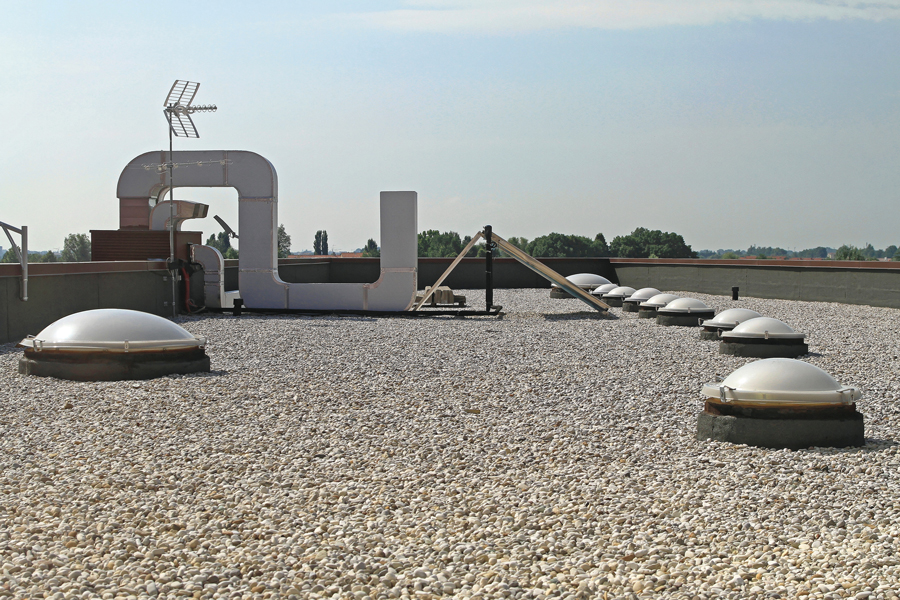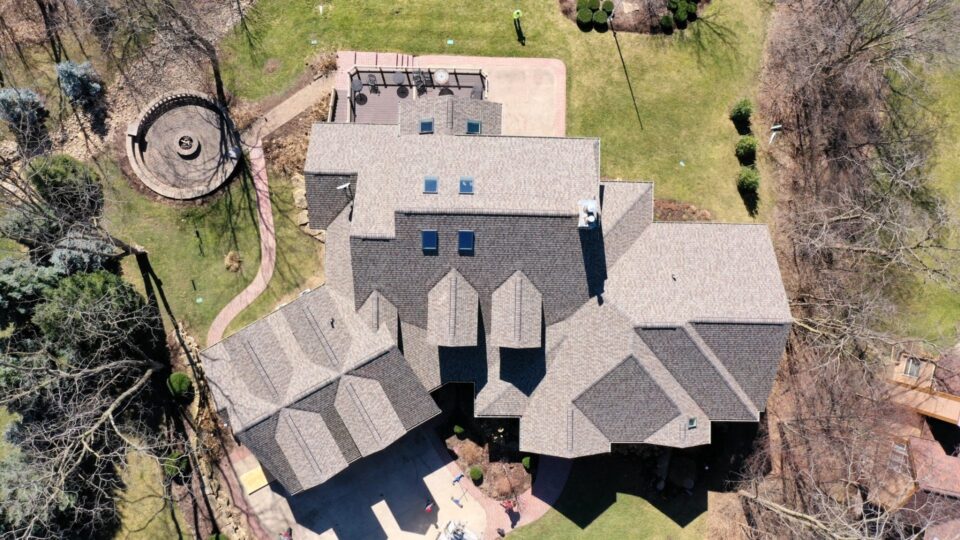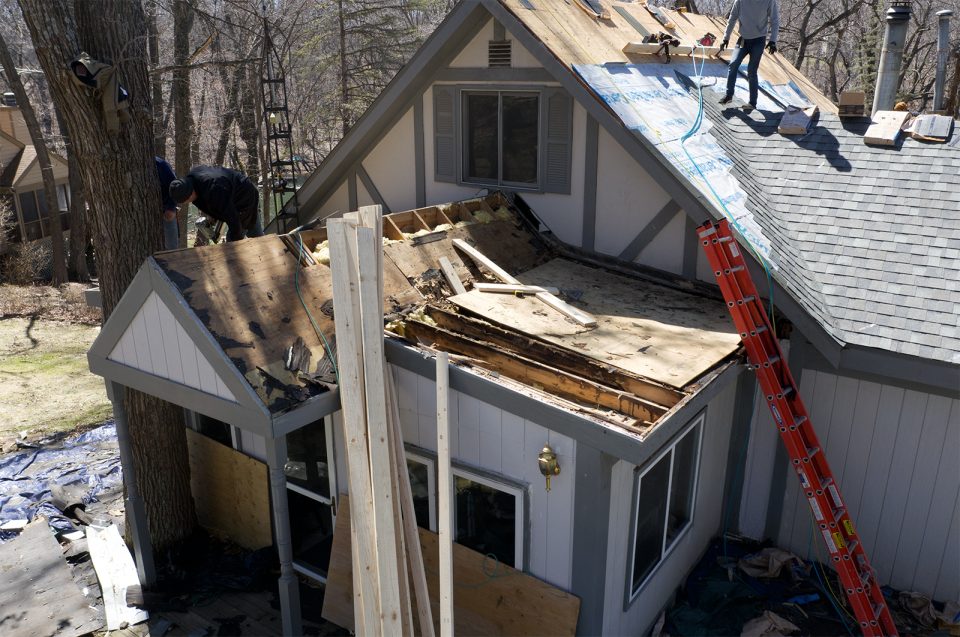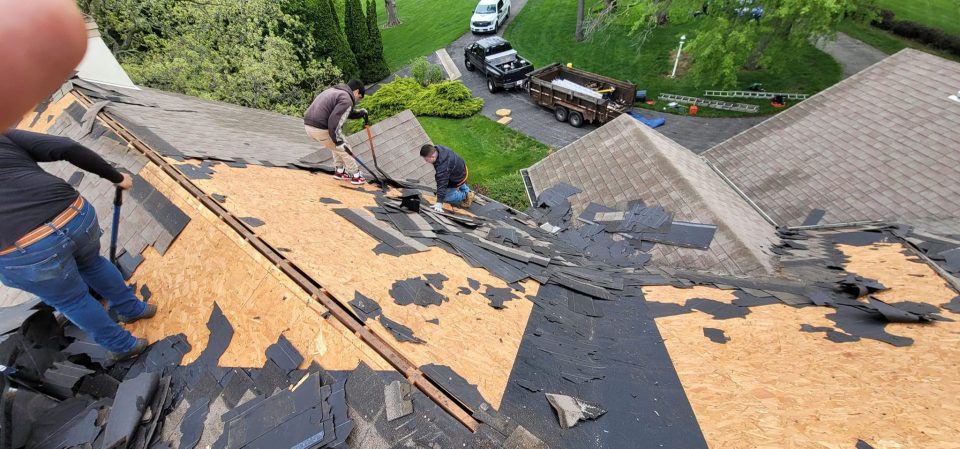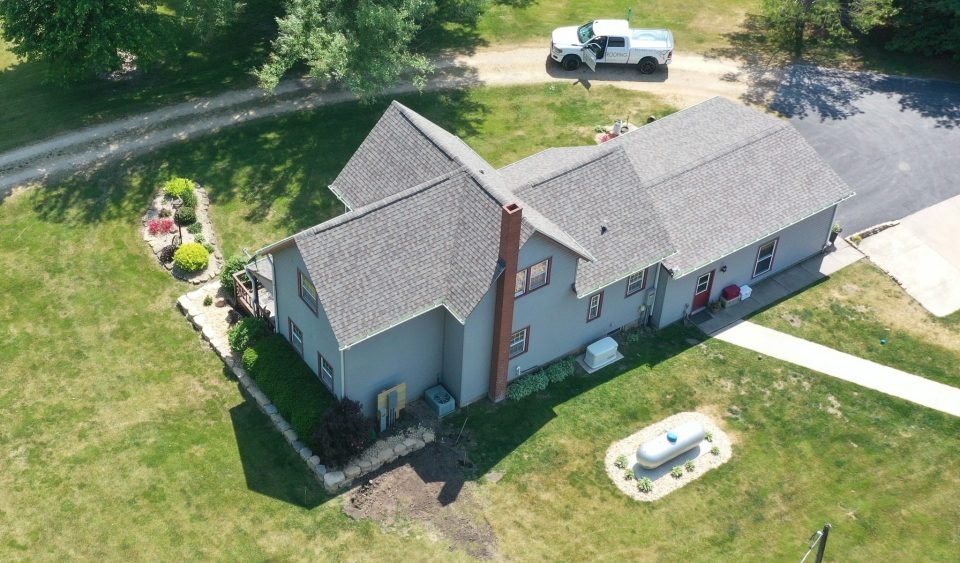There are various types of commercial roofs, each offering certain advantages suited to different building designs, climates, and budgets.
When considering a commercial roof for your Stockton, Galena, Apple River, Lanark, or surrounding Northern Illinois business, look for the best materials and best installer that result in an optimum application.
Factors to consider:
- Whether your building has a pitched, low slope, or flat roof structure
- Building location and climate
- Energy efficiency capabilities
- Building architectural style
- Is the cost of your commercial roof within budget
The more you know about the types of commercial roofs, the better you’ll be able to decide what best fits your building. Let’s discuss some of the most common types of commercial roofs in Illinois.
1. TPO (Thermoplastic Polyolefin) Roofs
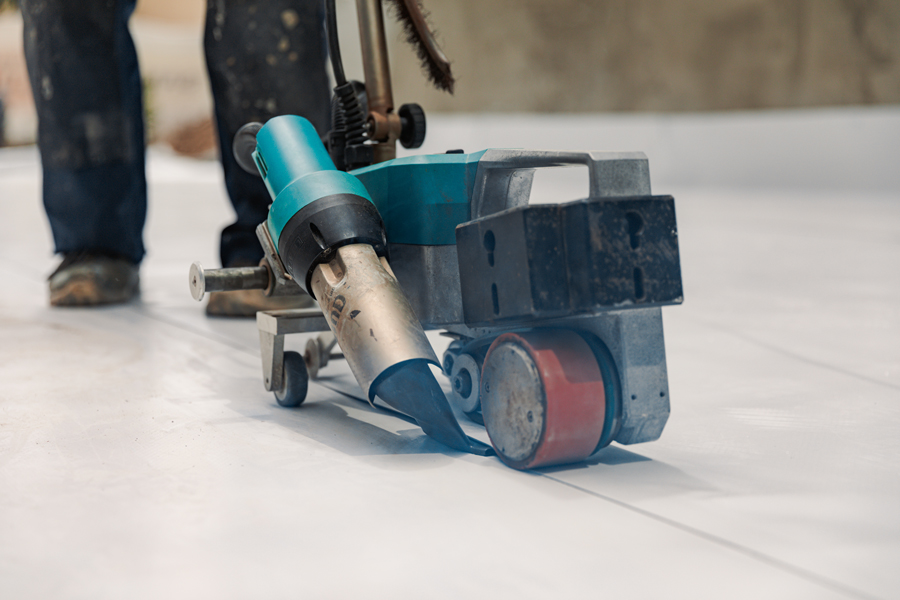
TPO roofing is the most popular single-ply rubber roofing membrane for low-slope roofing applications. TPO is a fully adhered, heat-weldable, and mechanically fastened roof system, where the membrane is attached using fasteners and plates or battens in the seams.
A distinctive feature of TPO is its white surface, which is not aesthetic so much as a means to better reflect sunlight, thereby reducing heat absorption and improving a building’s energy efficiency. In addition, TPO roofing systems are puncture, fire, and water resistant (TPO is often used as a pond liner). It is also highly resistant to kitchen grease from kitchen exhaust fans that can build up on a roof, making it an ideal application for restaurants.
An additional benefit is cost. TPO is less expensive than other white single-ply systems of the same thickness using the same attachment method. They are also more environmentally friendly than other PVC roofing systems.
2. EPDM (Ethylene Propylene Diene Terpolymer) Roofs
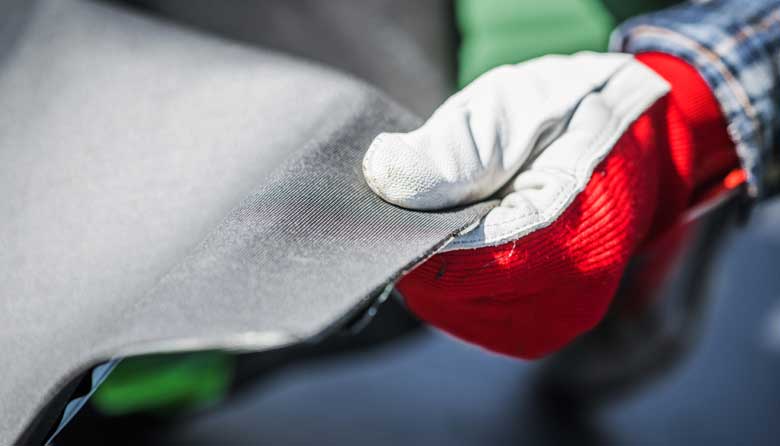
EPDM (ethylene propylene diene terpolymer) is also fully adhered synthetic rubber. A primary difference between an EPDM rubber roof and a TPO rubber roof is how the membrane seals are adhered together; EPDM uses seam tape; TPO melts the seams.
EPDM is also widely used in low-slope or flat roof buildings; it is 100% waterproof and highly resistant to severe weather such as high wind and hail storms. This is because EPDM consists of four layers.
EPDM typically comes in three thicknesses, 45 mil, 60 mil, and 90 mil. The higher the thickness, the more resistant to damage. Which to choose depends upon an evaluation of the building’s risk to damage. For example, a building near an airport is more likely to suffer damage from flying debris than one near a cornfield; similarly, a building located where there is a history of severe storms might consider opting for a higher thickness.
EPDM is available in both white and black surfaces. White reflects heat, black absorbs it. The color choice depends in part upon the look of the building, but also general climate conditions in weighing how best to achieve maximum energy efficiency in handling heating and cooling.
This type of commercial roof is also highly cost-effective, relatively fast and easy to install, and easier to repair, and thus less costly to repair, compared to other roofing materials.
3. Asphalt Roofs
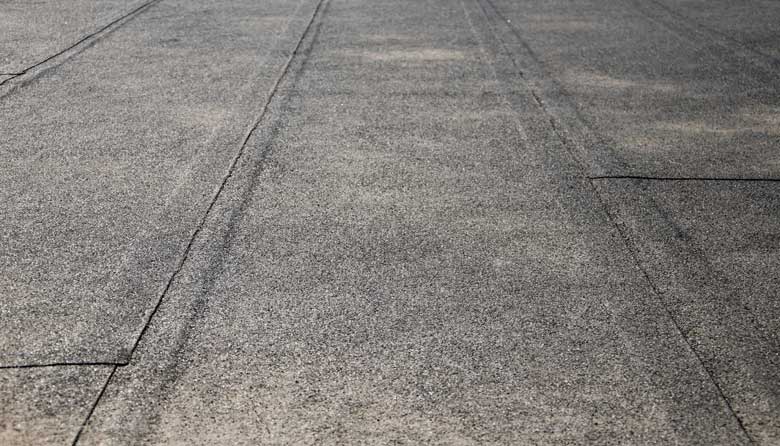
Asphalt is manufactured by pouring hot asphalt over a fiberglass mat to form a waterproof barrier and then embedding stone granules on the top layer of the asphalt to protect it from degradation and also add color. Shingles are made in strips and packaged in bundles.
One of the most popular roofing materials, residential and commercial, asphalt shingles are available in a variety of styles, with premium asphalt shingles offering 50-year warranties. Note that these warranties are dependent on the quality of installation by a professional and certified roofing installer.
Asphalt is particularly popular for commercial buildings with a “residential look,” frequently seen with doctor’s and general business offices, and particularly with buildings with peak steep slope roofs. They not only look good, asphalt shingles can mimic various styles of roofing (e.g., wood shake, tile, or slate) when a building needs to integrate its appearance with existing structures. An additional benefit is asphalt shingles can be installed over an existing shingle roof, saving the cost of tearing off old roofing.
4. Built-Up Roofing (BUR) and Modified Bitumen Roofs
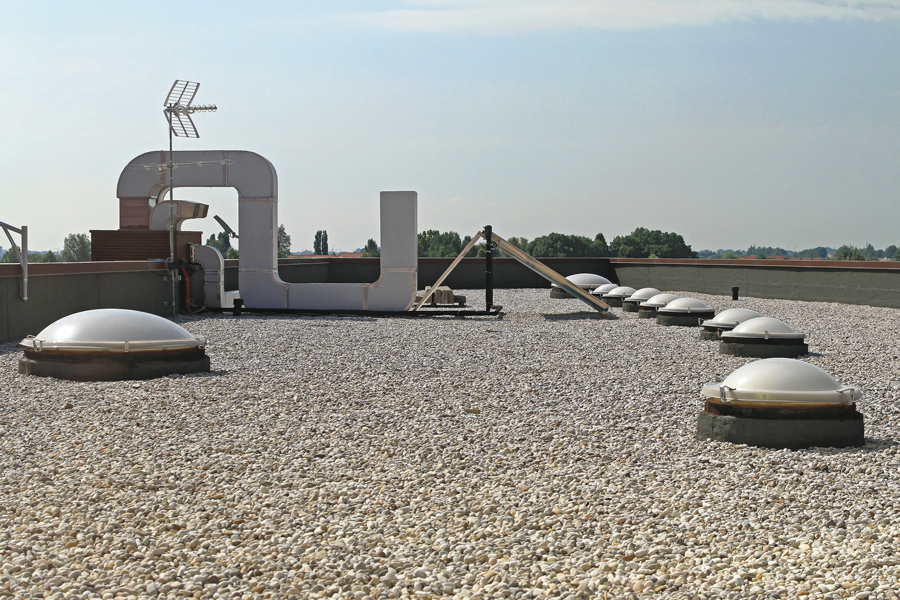
BUR roofs, also known as tar and gravel roofs, consist of multiple layers of bitumen (asphalt or coal tar) alternated with reinforcing fabrics that are topped with a layer of gravel or mineral granules. This type of commercial roof offers excellent waterproofing and UV protection, is highly durable and long-lasting.
Modified bitumen roofs are similar to BUR roofs but use pre-manufactured rolls with modified asphalt membranes that are heat-welded or adhered to the roof substrate. Like BUR, you get the look of an asphalt roof for low-slope and flat applications. The material is also easy to maintain and highly energy efficient due to resistance to UV exposure and extreme temperatures. Both roofs are favored for applications where regular foot traffic is expected.
5. Metal Roofs
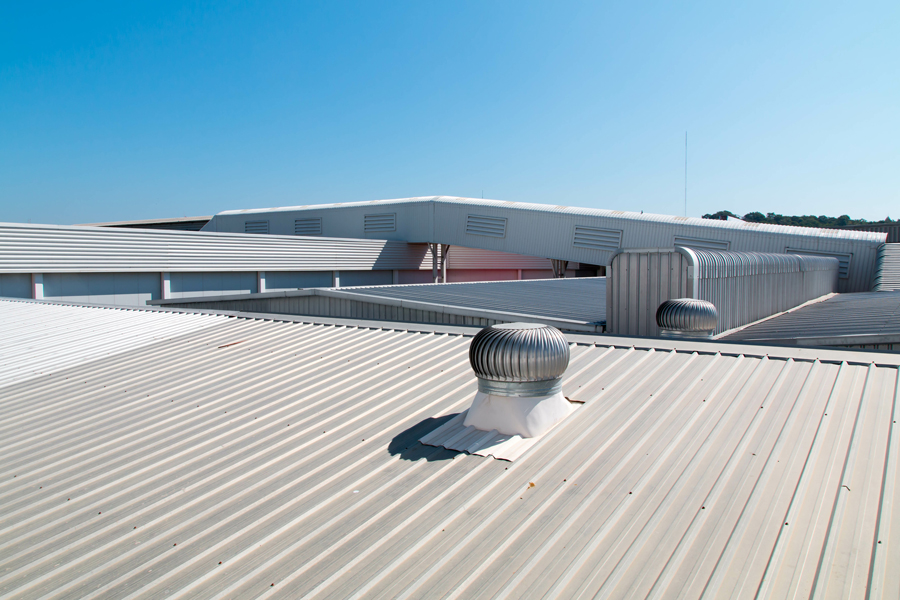
Metal commercial roofs are typically made of steel, aluminum, or copper panels or sheets. They can be installed in various configurations, including standing seam, corrugated, and metal tiles.
Metal roofs and highly durable and long-lasting, fire-resistant, and environmentally friendly. Reflective surfaces can improve energy efficiency.
A metal roof can give a property a sleek, polished look. However, a metal roof is more susceptible to corrosion unless a protective surface layer is applied to mitigate moisture, pollution, and environmental exposure.
The initial cost may be higher than other types of commercial roof. Expansion and contraction due to temperature fluctuations may cause noise issues if not properly installed.
6. Green Roofs
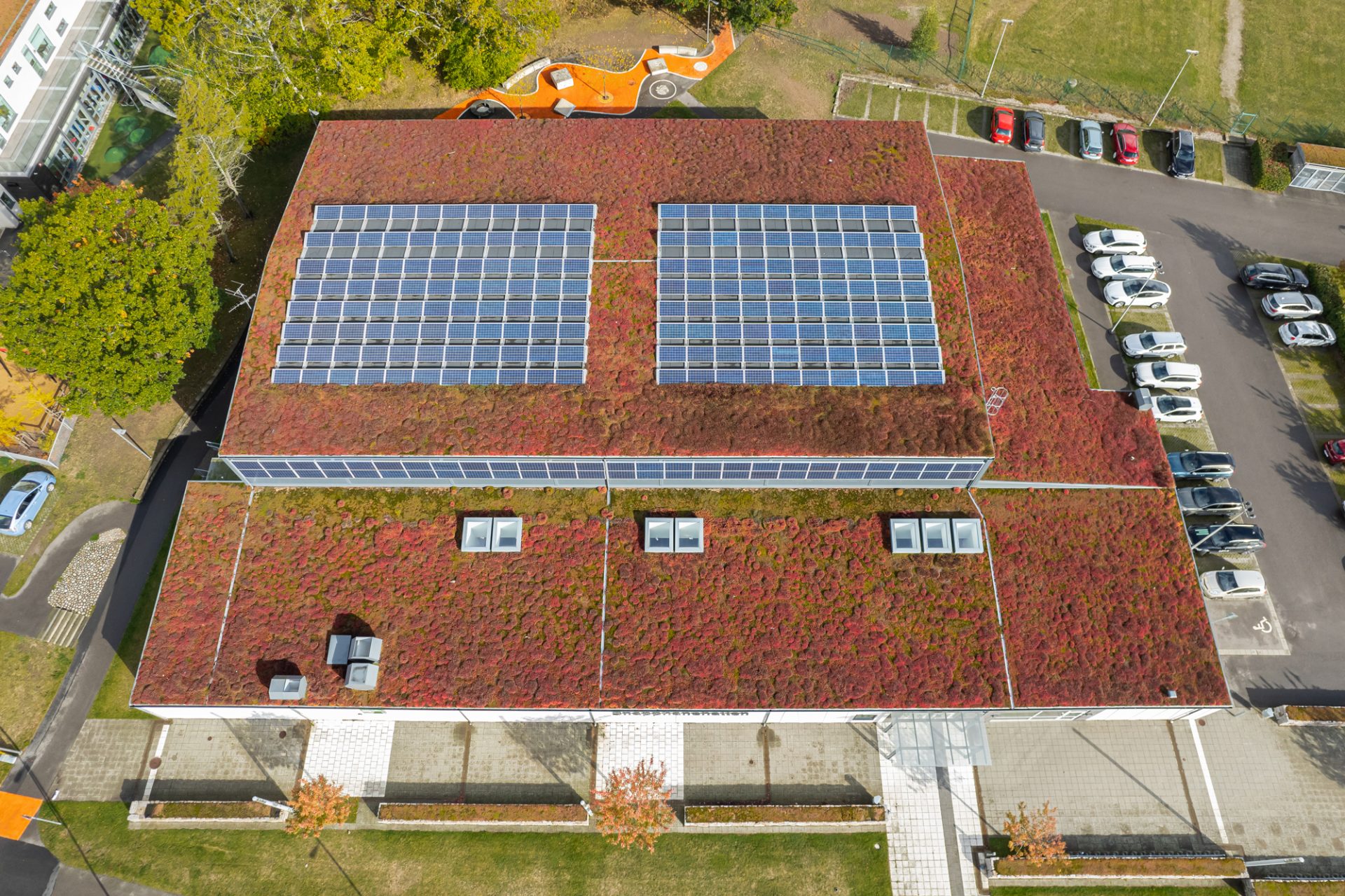
Green roofs are literally green, with a layer of grass and/or vegetation planted over a waterproofing membrane and drainage system. They can be extensive (thin soil and drought-tolerant plants) or intensive (deeper soil and a wider variety of plants).
Green roofs provide superior insulation, reduce stormwater runoff, and improve air quality while also enhancing building aesthetics. Green roofs are environmentally friendly and can contribute to LEED certification.
The main disadvantage of green roofs is that they require specialized design and installation. A building must also be capable of supporting a higher weight load. Maintenance of vegetation is also more highly labor-intensive than more traditional commercial roofs.
Elevated Commercial Roofing
Elevated Commercial Roofing offers 5-star service and only uses the best products from CertainTeed & Mule-Hide. Both are noted for innovations in leak protection and energy efficiency that achieve superior performance and perfect fit, backed by industry-leading warranties.
Whatever type of commercial roof you select for your Stockton, Galena, Apple River, Lanark, or surrounding Northern Illinois business, Elevated Roofing makes sure your bottom line gets top-line treatment.
Elevated Roofing is Illinois’ trusted partner to protect and enhance the value of your commercial property with top-notch roofing solutions.
Tell us about your building’s roofing needs and schedule a free roof inspection of your commercial property.
